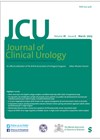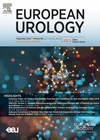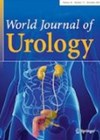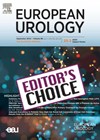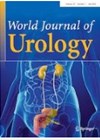
Journal Reviews
Why are urology consultants leaving full-time NHS practice?
The early retirement of experienced doctors in the UK poses a significant challenge to healthcare provision, particularly in urology, where workforce shortages are exacerbated by high attrition rates among both trainees and consultants. While career dynamics in high-income countries have...
Prostate cancer detection in younger men
Prostate cancer (PC) screening using prostate-specific antigen (PSA) testing with systematic biopsy (SBx) reduces mortality but risks overdiagnosis and unnecessary biopsies. Multiparametric MRI (mpMRI) enables MRI-targeted biopsy (TBx) of suspicious lesions and is now recommended before biopsy, although its role...
The case against omitting systematic biopsy in younger men
In this issue of European Urology, Al-Monajjed et al. report findings from the PROBASE trial, which evaluated prostate cancer (PC) detection in men aged 45–50 years with PSA ≥3ng/ml using both MRI-targeted biopsy (TBx) and systematic biopsy (SBx). Among 525...
Multiparametric MRI with targeted-only biopsy – a new standard?
In this issue of European Urology, Kasivisvanathan et al. present a meta-analysis of two randomised trials comparing prebiopsy MRI with targeted biopsy (TBx) alone versus standard transrectal ultrasound-guided biopsy (TRUS-Bx) in biopsy-naïve men at risk of prostate cancer. Their findings...
The cost of bladder cancer: what can be done?
The rising cost of cancer care is a growing concern for health systems. A 2020 study estimated Europe’s annual cancer-related expenditure at €199 billion, with €109 billion attributed to healthcare costs. Bladder cancer (BC), in particular, imposes a significant financial...
Preoperative stenting compared to non‑stenting in ureteroscopy for urinary stone disease
Urolithiasis, one of the most prevalent urological conditions worldwide, significantly affects patients’ quality of life. In the United States, its lifetime prevalence is approximately 1 in 11, while global rates vary from 1% to 13%. The management of urolithiasis offers...
ESWL, fURS and PCNL for lower pole renal stones
Lower pole stones (LPSs) are common but less likely to pass spontaneously than other renal stones, often necessitating intervention. In 2015, a systematic review and meta-analysis comparing percutaneous nephrolithotomy (PCNL), flexible ureterorenoscopy (fURS), and extracorporeal shockwave lithotripsy (ESWL) was published....
Percutaneous nephrolithotomy: wisdom, dogma, paradigm and myths
A non-transpapillary technique appears to ease access to the kidney – the most critical step in percutaneous nephrolithotomy (PNL) – when compared to the classic transpapillary approach. Remarkably, the earliest descriptions of percutaneous access by Goodwin et al. in 1955...
Management dilemma for very high-risk non–muscle-invasive bladder cancer
The European Association of Urology (EAU) guidelines recommend upfront radical cystectomy (RC) for very high-risk (VHR) non-muscle-invasive bladder cancer (NMIBC). However, real-world adoption is limited, as most patients are reluctant to undergo immediate bladder removal. The EAU 2021 risk model...
Is antibiotic prophylaxis warranted in hypospadias repairs?
Hypospadias repair is a common paediatric urological procedure. Complication rates following hypospadias repair are variable (ranging from 5–10% for distal hypospadias repairs and as high as 32–70% for proximal repairs). Limiting surgical site infections by minimising infection through antibiotic prophylaxis...
Does coiling of the proximal end of the ureteral stent affect stent-related symptoms?
Ureteral stents, first described by Zimskind in 1967, have become a critical tool in modern urology. They are widely used in various endourological procedures to drain obstructed or infected renal units and as a safety measure before or after surgeries....
Disconnect between clinical trials and real-world oncology patients
Clinical trials are essential to advancing cancer treatment, providing the evidence needed to approve new therapies and improve patient outcomes. However, the strict eligibility criteria used – especially in prostate cancer trials – often exclude real-world patients. These criteria prioritise...

